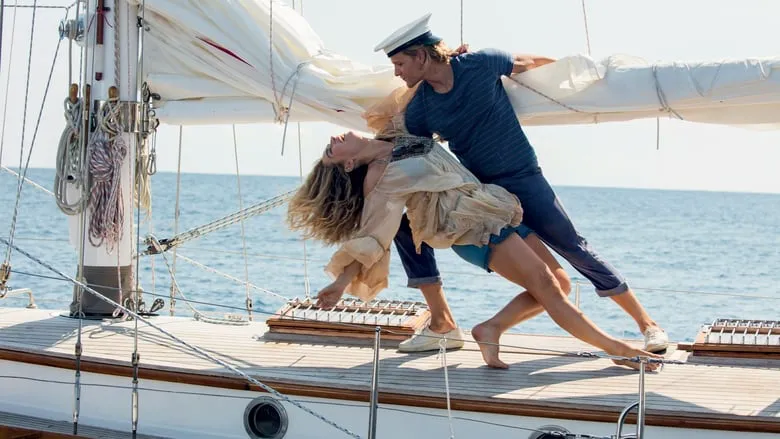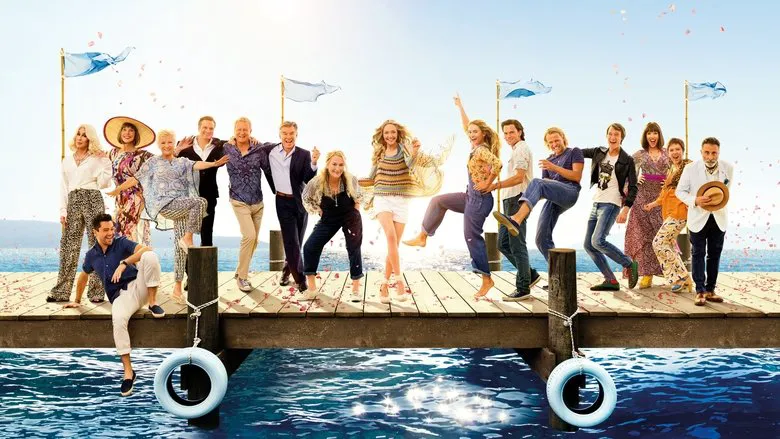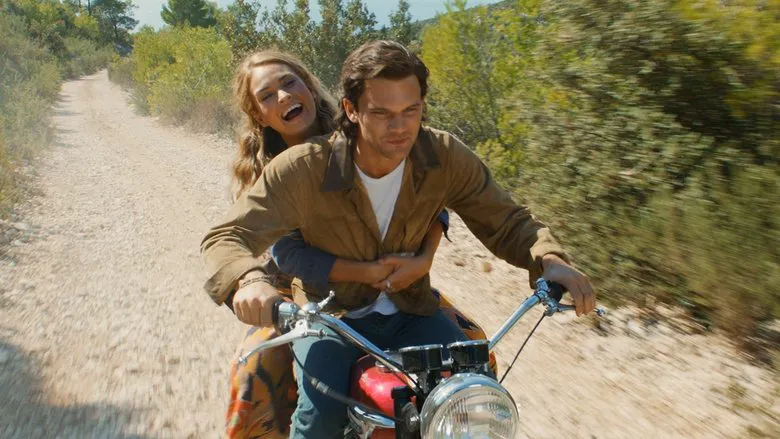Mamma Mia! Here We Go Again: A Decade Later, Does the Sequel Sing?
The prequel events of the smash-hit musical Mamma Mia! whisk us back to Donna’s post-university days, when she embarks on a globetrotting adventure. En route to the fateful Greek island that will become her home, she encounters the three potential fathers of Sophie. While young Donna revels in the 70s, present-day Sophie prepares to open the hotel inherited from her mother.
It’s been a decade since the original musical, brimming with ABBA’s iconic hits, captivated audiences. Meryl Streep was the film’s powerhouse, and even in a supporting role, the film seemed unthinkable without her. Now, her younger self is embodied by the charismatic Lily James, performing lesser-known tracks from the Swedish group (after all, you can’t just replay the greatest hits endlessly). The film aspires to be more than just a star-studded karaoke session on Skopelos, but it falls short. Perhaps entrusting the direction to Ol Parker was a misstep, as he handles the musical genre with the grace of a grandma using a new iPad. He seems utterly lost, despite his best efforts.

Parker’s approach is superficial: stripping characters of drab clothing to reveal disco attire and forcing everyone to dance, or cranking up the brightness to “eyeball evacuation” levels. The focus was clearly on staging visually appealing musical performances, while the story of the strong bond between mother and daughter takes a backseat. The plot serves as mere glue for dance numbers, and the script is so lazily written that even blatant emotional manipulation fails to resonate. If there’s a gun on the wall, they’ll point it out repeatedly, ask if you’re sure you understand it’s a gun, and then it will fire confetti and glitter.

Mamma Mia! Here We Go Again has about as much regard for logic as modern blockbusters have for the laws of physics. The characters’ ages are particularly baffling: if Sophie was born in the 70s, why does she look no older than 30 in the film, and how can Donna’s mother look younger than her daughter? But hey, it’s a musical, so you can always distract from tedious temporal analysis with a simple musical number.

Over-the-Top Production Design
The production design is also glaringly obvious. The film’s sets often take center stage, and the characters in their vibrant costumes blend into the colorful chaos on screen. Generally, production designers aren’t well-known because the less their work stands out, the better they’ve done their job. In Mamma Mia! Here We Go Again, you might find yourself distracted from the songs and dialogue, wondering if Zara Home still sells those decorative pillowcases and where you can order photo frames like the ones in Sophie’s room.

Silver Linings and Missed Opportunities
The film does have its merits. The fantastic trio of Skarsgård, Brosnan, and Firth appear in disco attire. You realize that if these guys formed a band, the boy band craze would return in a heartbeat. Just don’t let Pierce Brosnan sing – a lesson the creators learned well the first time around, so no worries there. However, the long-awaited appearance of Cher, despite the filmmakers’ best efforts, isn’t quite as spectacular. What we see on screen is more like a ghost of the great Cher, dressed as Lady Gaga. Poor Andy Garcia is left to carry the romantic scene, as Cher focuses on ensuring that none of her facial expressions betray her well-hidden wrinkles.
Mamma Mia! Here We Go Again pales in comparison to the original in terms of sincerity and quality of direction.
But if you’re craving a Greek island escape from work and can only afford a movie ticket, it’s not the worst option for two hours of escapism.